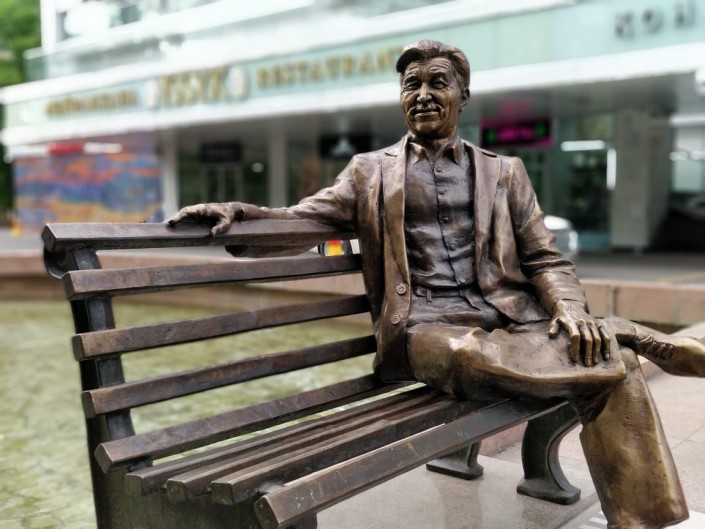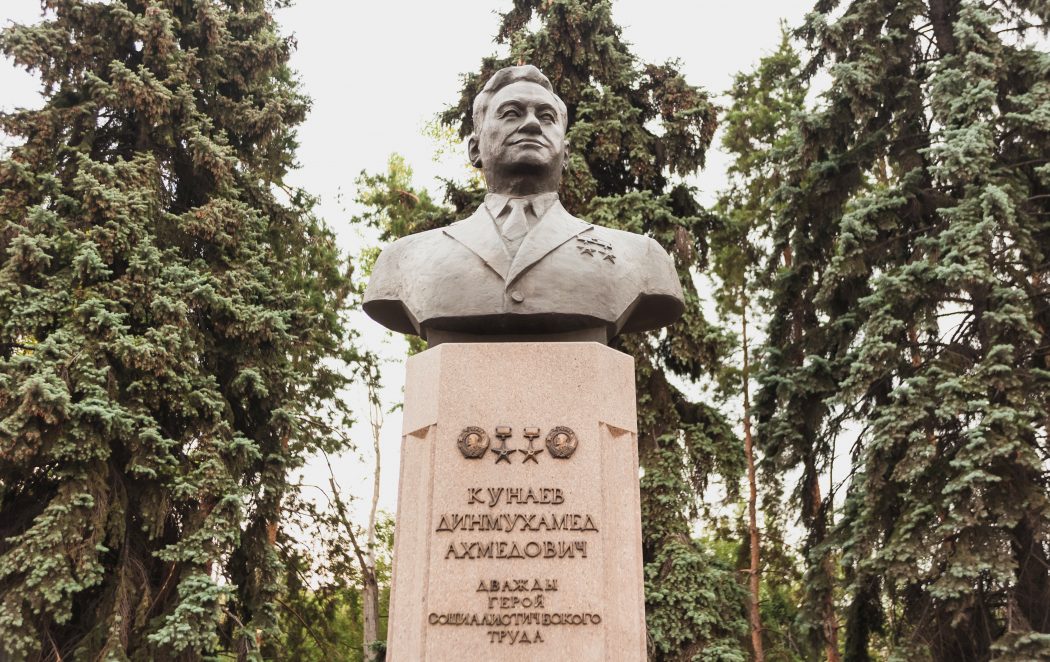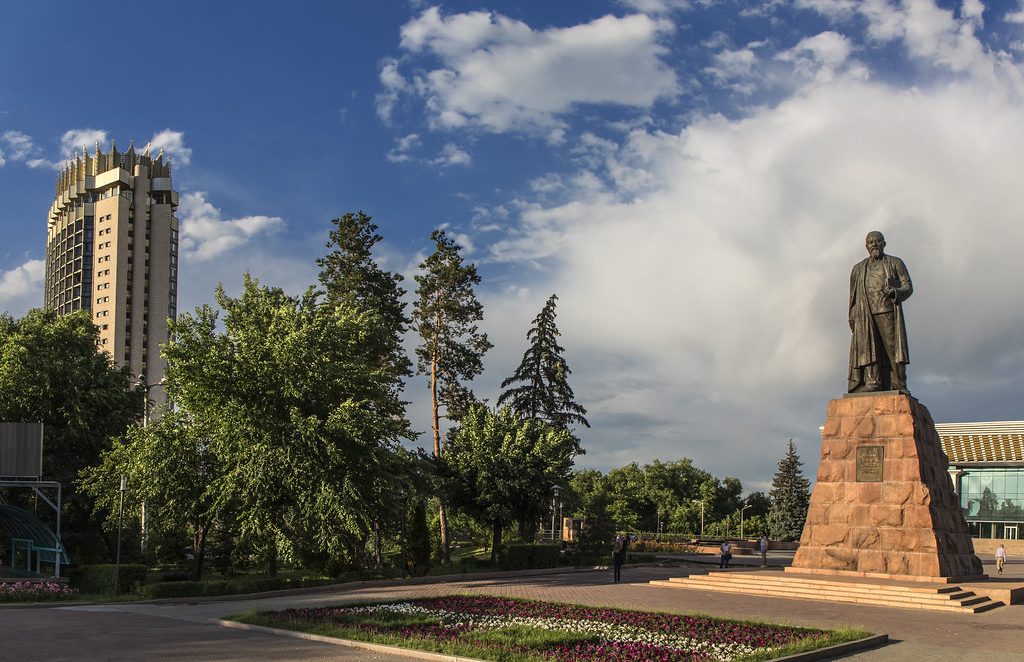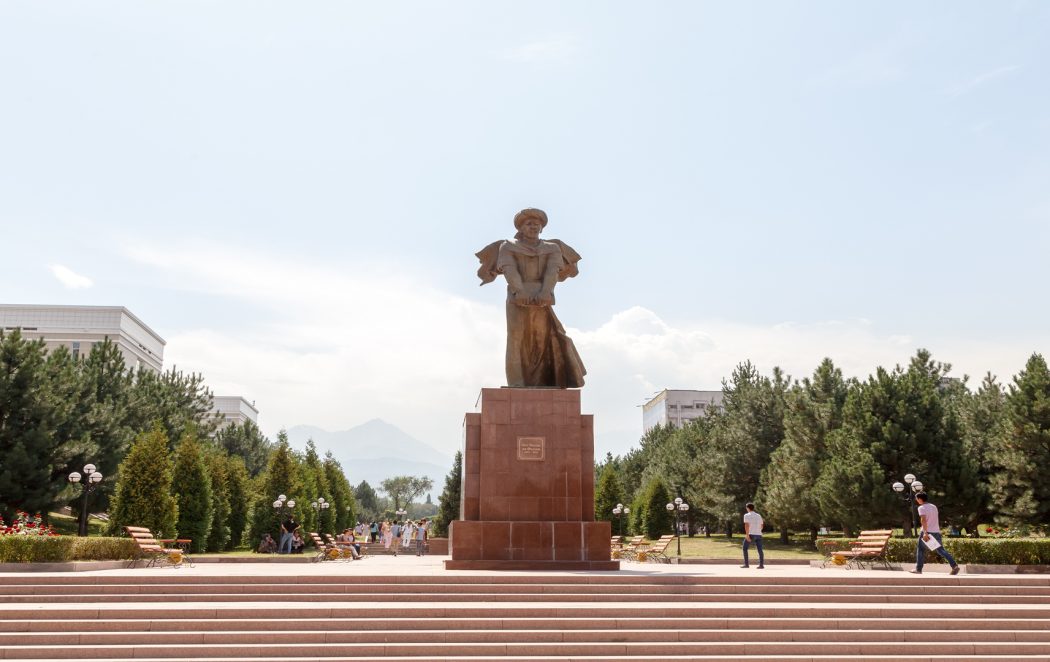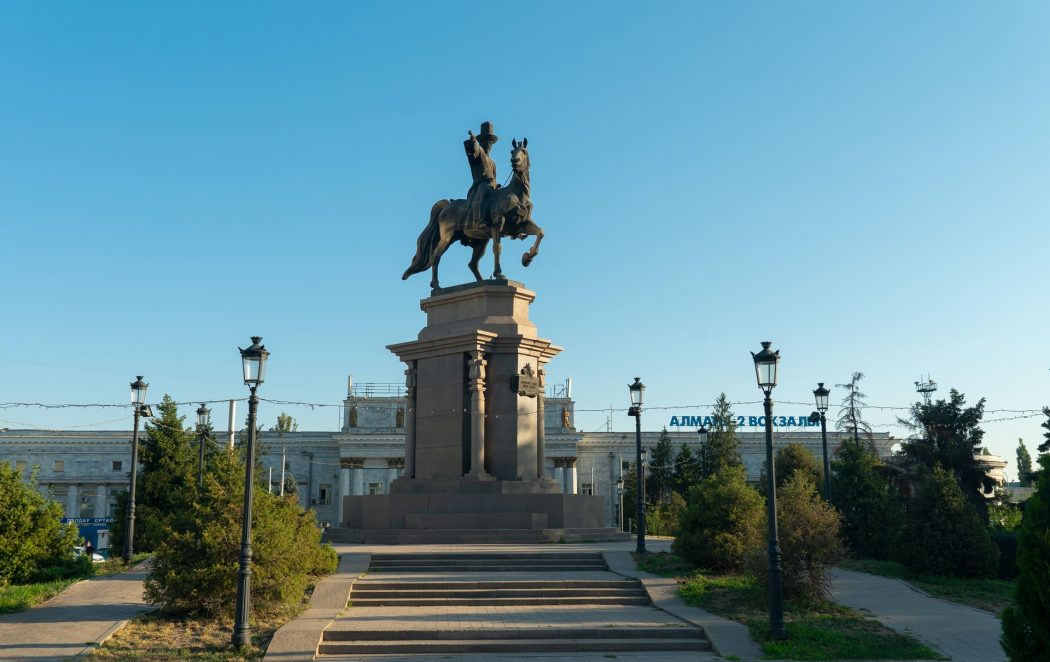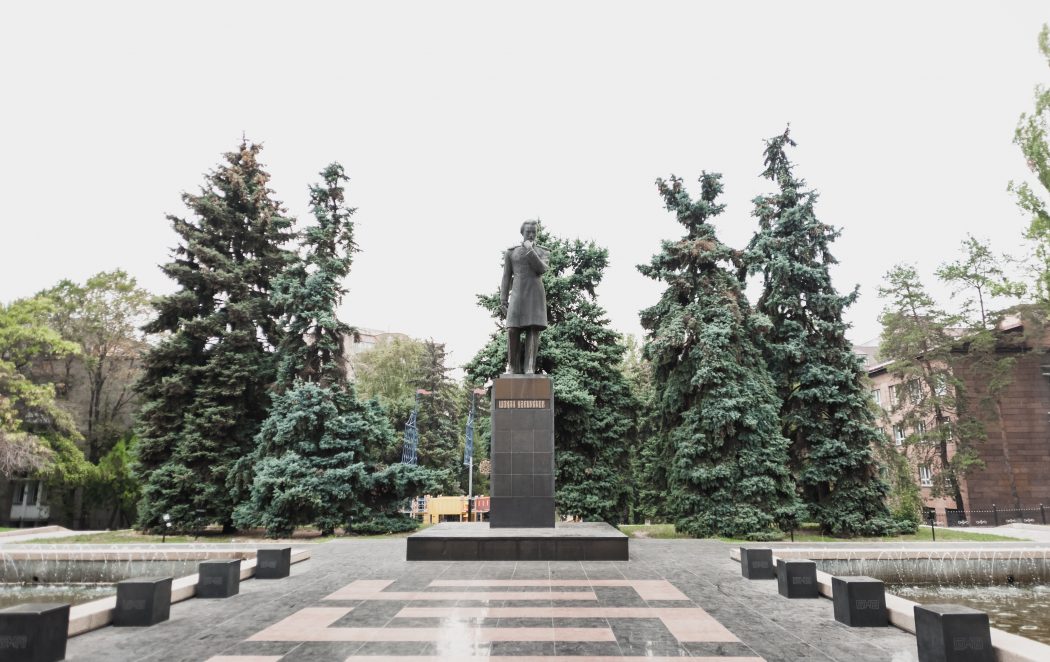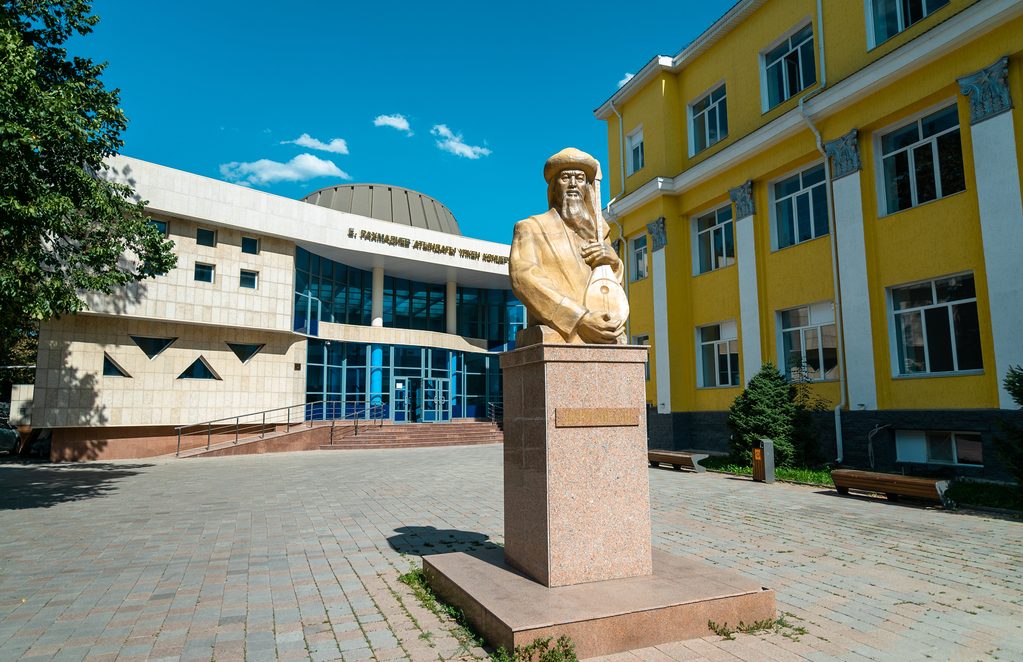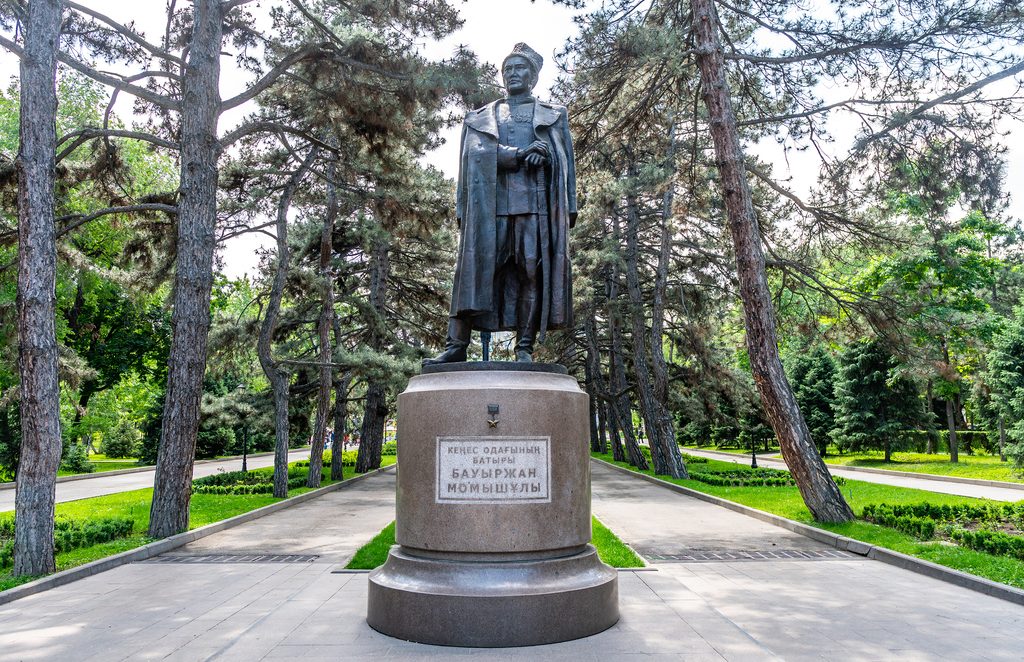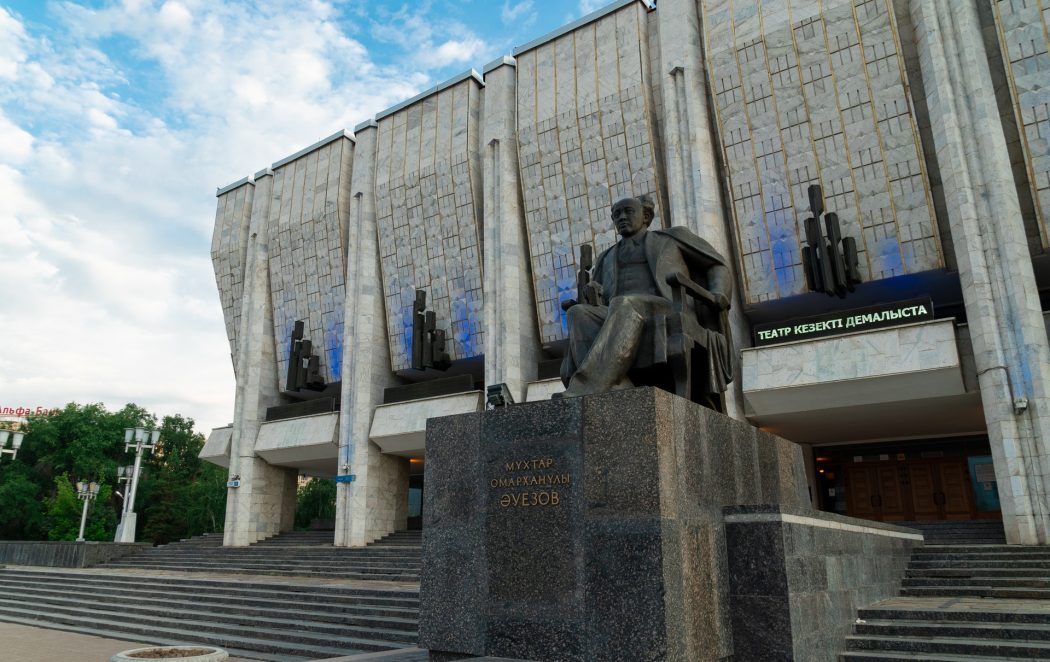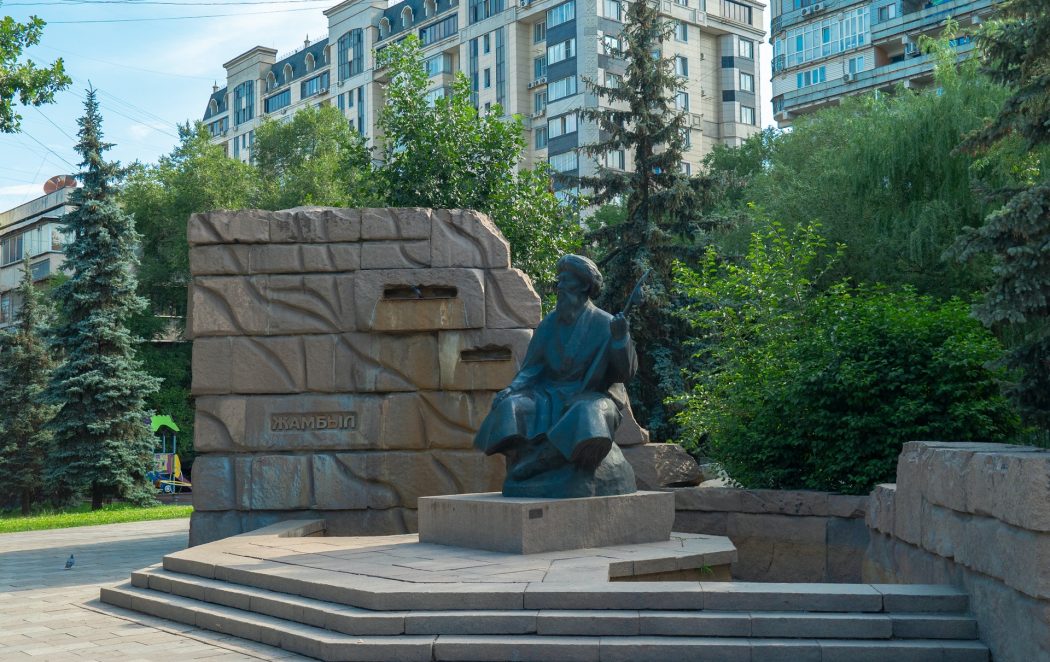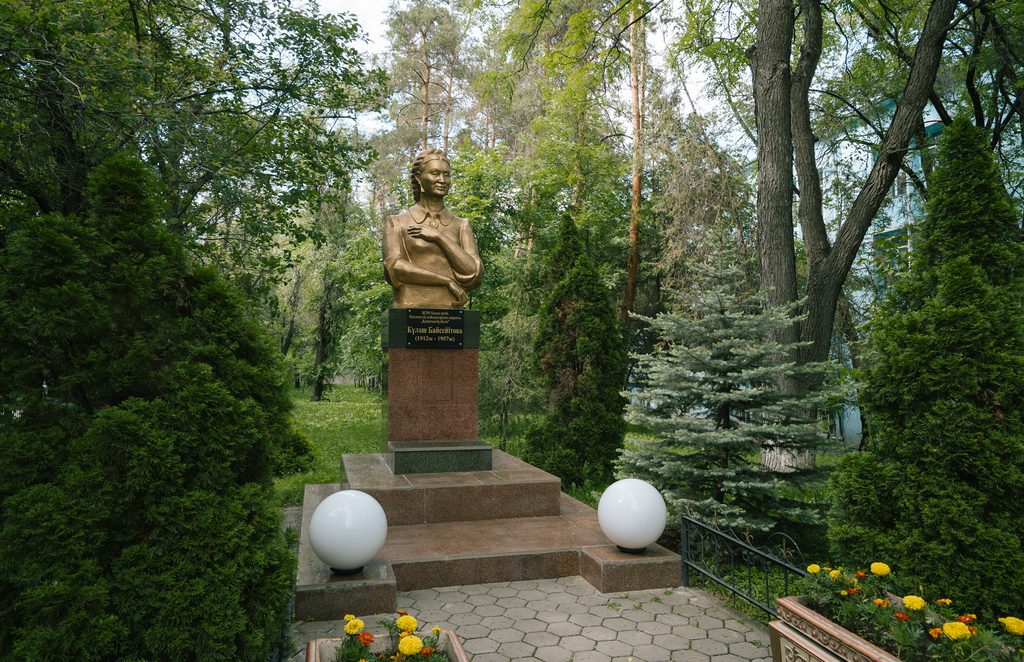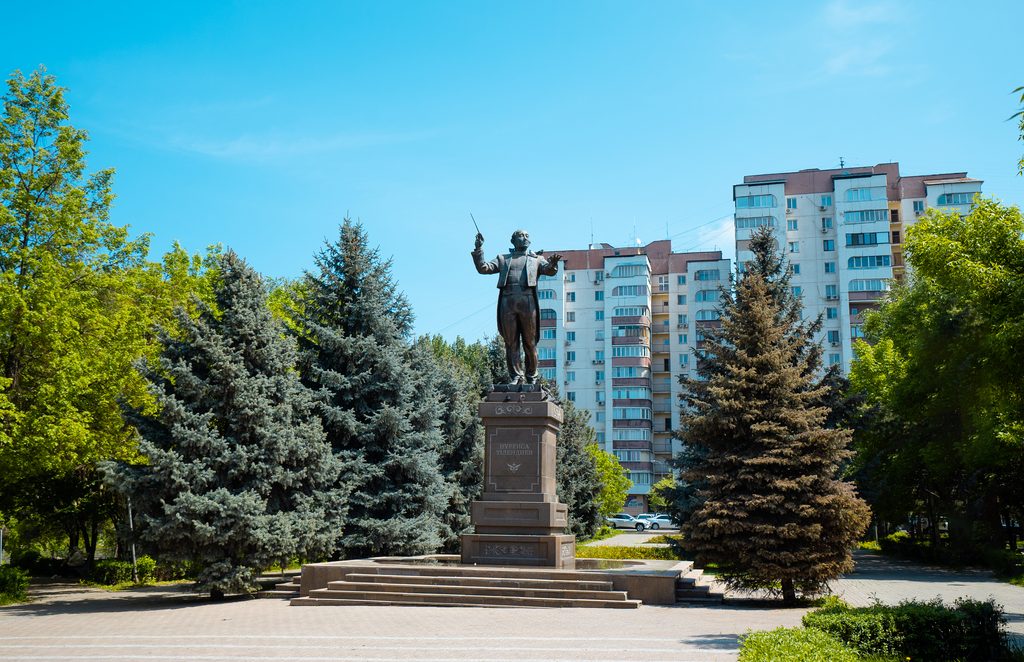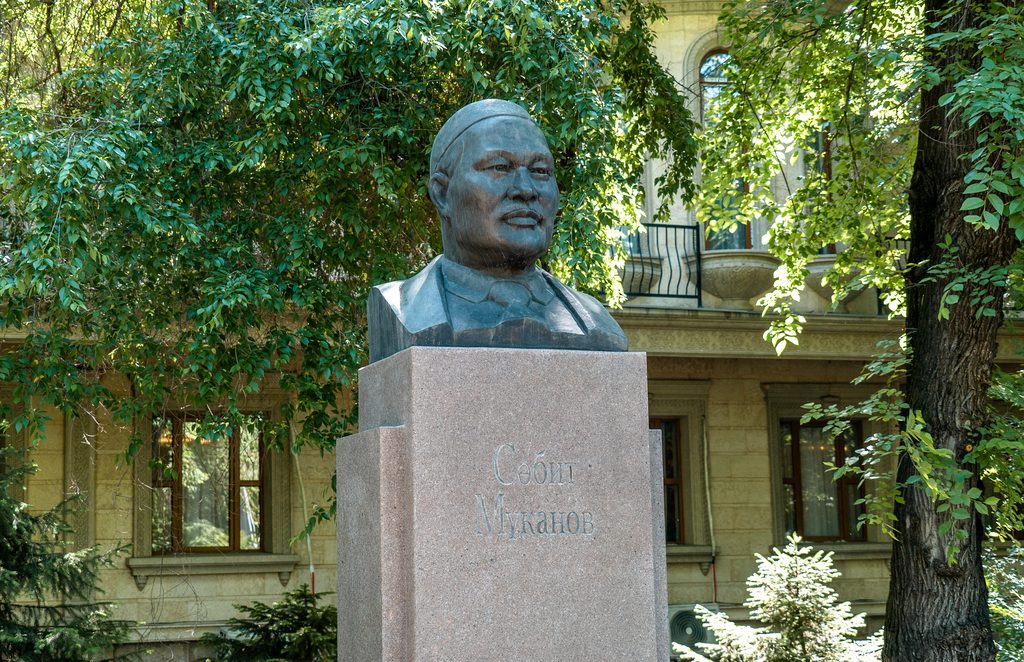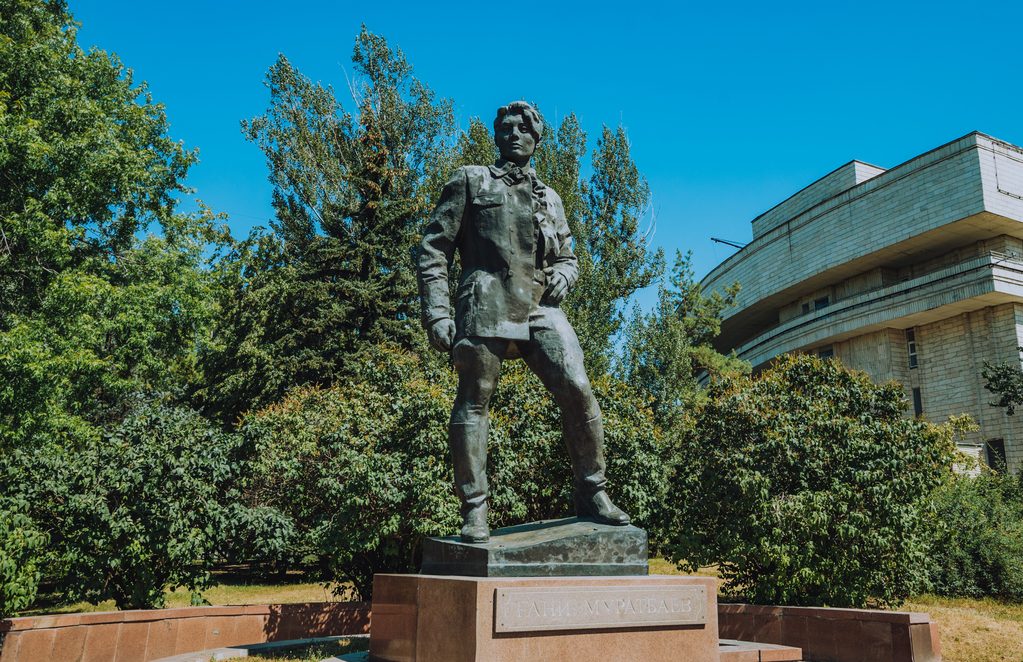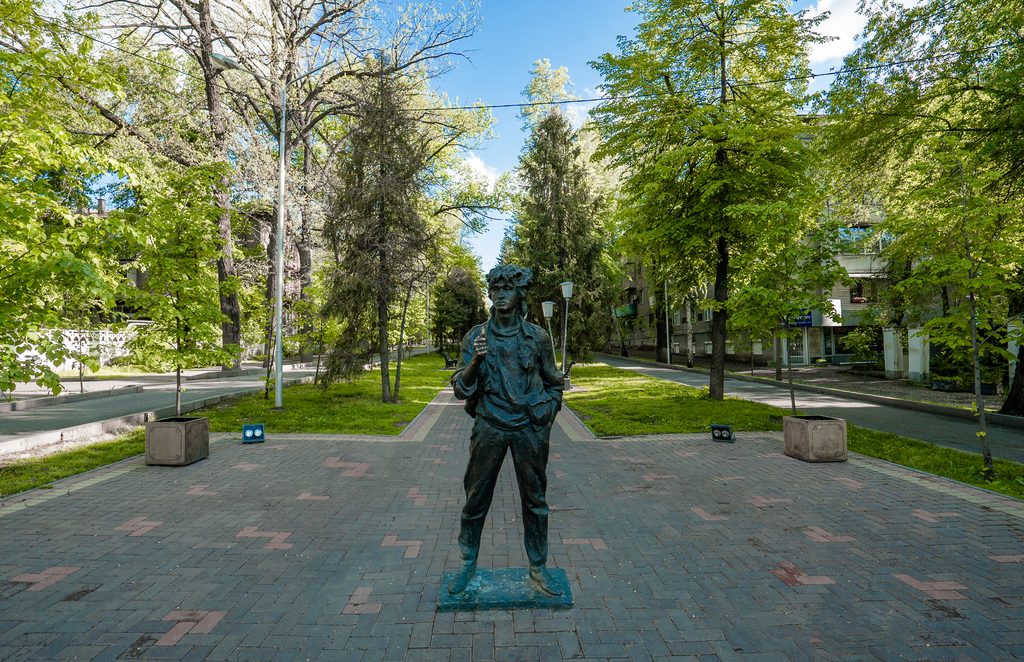The monument to the girls Heroes of the Soviet Union A. Moldagulova and M. Mametova
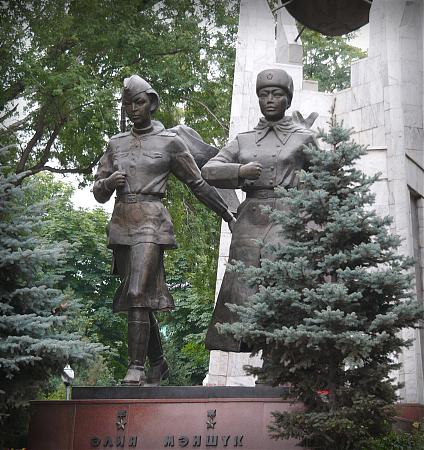
The monument to the girls Heroes of the Soviet Union A. Moldagulova and M. Mametova was opened in front of Astana Square on October 25, 1997. Manshuk Mametova was born in 1922. As a student, she combined her studies at a Medical Institute and work in the secretariat of the Council of People’s Commissars of the Kazakh SSR. On August 13, 1942, she volunteered for the front and fought as part of the 21st Rifle Division and the 100th Rifle Brigade. She received the rank of senior sergeant and commander of a machine gun crew. Manshuk Mametova was awarded the posthumous title of Hero of the Soviet Union for her participation in the battle of Nevel in October 1943. A street and a school in Almaty, a glacier and a peak in the Trans-Ili Alatau are named after her.
Sniper School
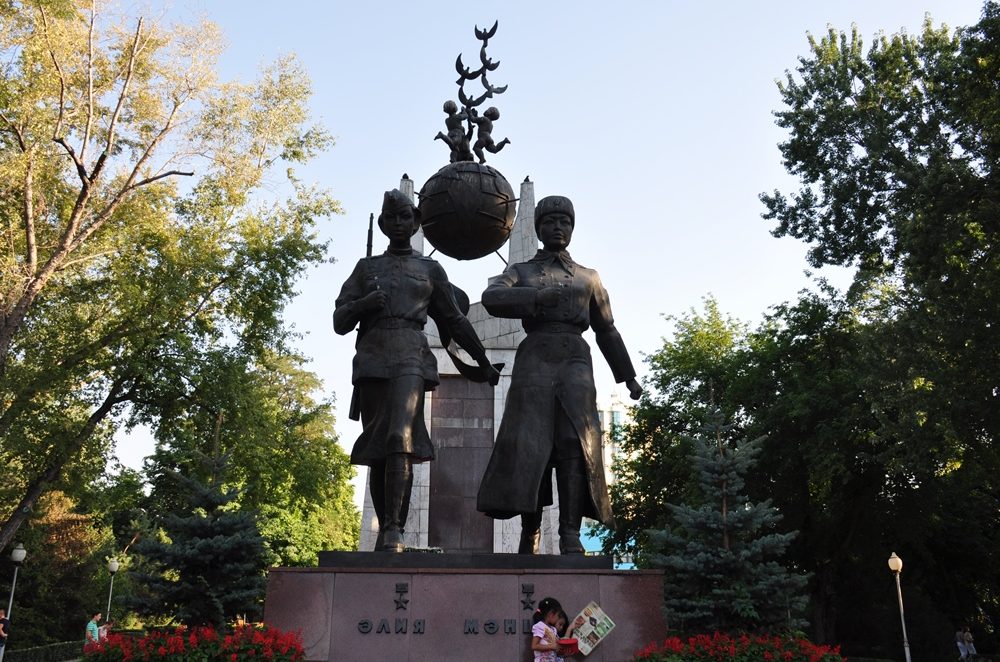
Aliya Moldagulova was born in 1925 in the village of Bulak. From the age of 8, after she was left without parents, Aliya lived with her uncle Aubakir Moldagulov under the care of her grandmother in the city of Alma-Ata. in 1935, the Moldagulov family moved to Moscow, after his uncle entered the Military Transport Academy, and later the family moved to Leningrad. Since 1939, Aliya studied at boarding school N46. At the age of 18, after graduating from sniper school, Aliya Moldagulova volunteered for the front, where she fought as part of the 54th Rifle Brigade of the Second Baltic Front. She contributed to the successful offensive of the battalion near Pskov. Moldagulova was known as a sharpshooter. Aliya Moldagulova Baly was awarded the title of Hero of the Soviet Union and the Order of Lenin posthumously in June 1944. The Mayor of Almaty in May 1997 decided to erect a single monument to A. Moldagulova and M. Mametova. Sculptor – K. Satybaldin, architects – T. Yeraliev, V. Sidorov, designer – M. Erkenov.
Sculptures of girls in military uniforms marching next to each other are made of gray and black granite, as is the pedestal of the monument. The arms of each of the girls are stretched out and pulled back in time with the march, which creates the illusion of walking. Behind the sculptures of the girls there is a composition in the form of a monumental obelisk. The obelisk is crowned with a sculptural composition “The World”. This composition consists of a three-dimensional globe and children who let birds into the sky. Two gold stars of the Hero of the Soviet Union and the embossed names of the girls adorn the pedestal. The monument of the girls is common, which suggests their acquaintance, but during their lifetime they were not familiar.


